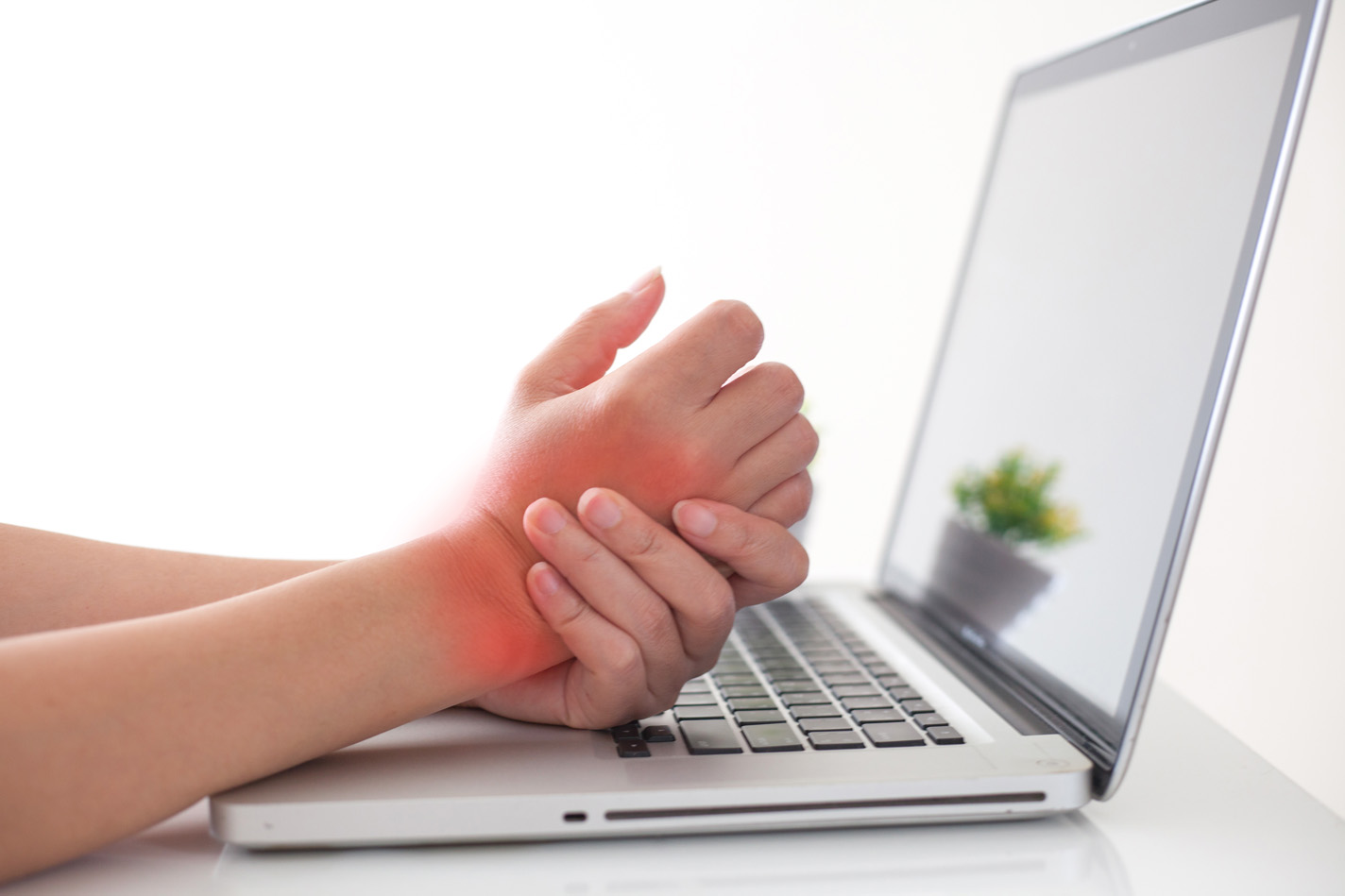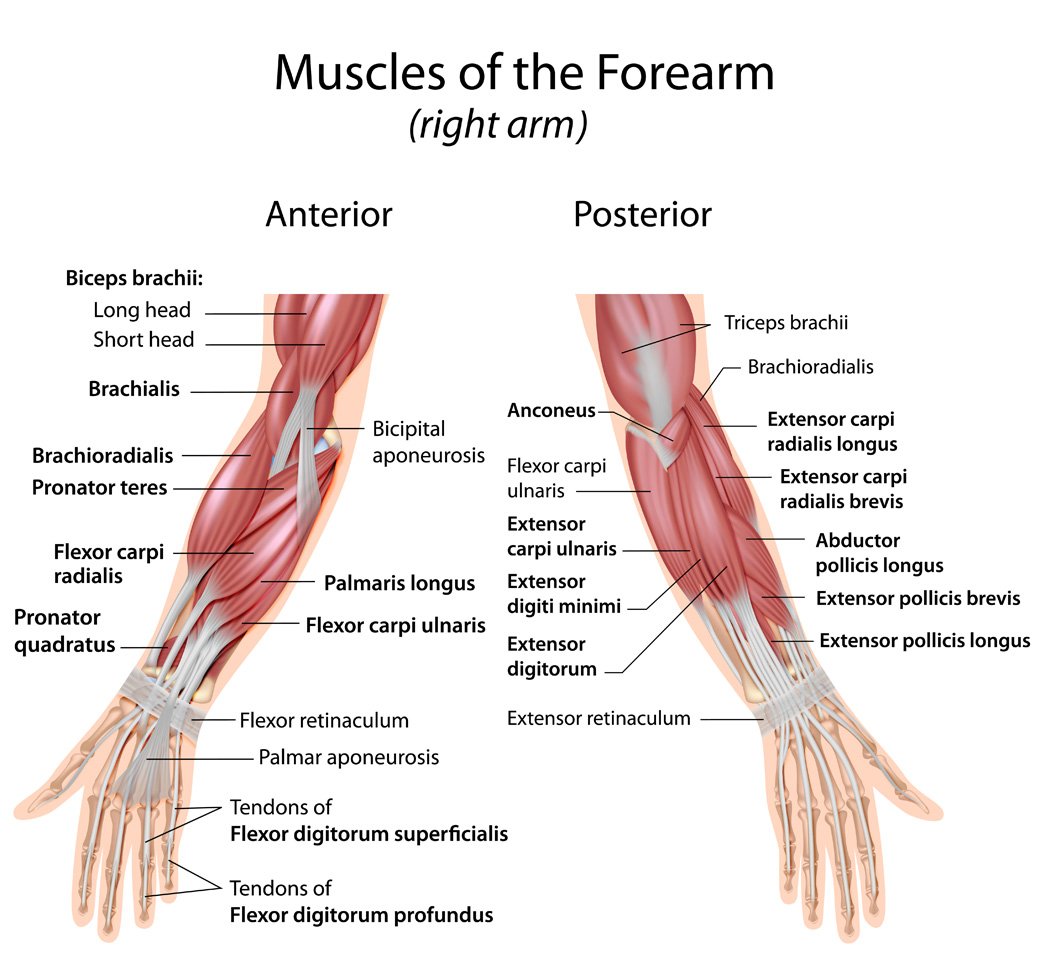Tendonitis, Tendon Injuries and Lacerations
The tendons of the hand and wrist are mostly long white cords of tissue that connect the muscles to the bones and allow for movement. Most of the muscles are located in the forearm, and most of the tendons travel through tight compartments in the wrist and fingers before attaching to their target bones. When the forearm muscles contract, they pull on the tendons much like puppet strings control a puppet. When a tendon ruptures or is cut, function is lost. When tendons are inflamed or scarred, they may not glide smoothly through the hand causing pain, clicking, or stiffness.

Causes
There are many causes of both acute and chronic tendon injuries including:
- Lacerations (cuts) and puncture wounds to the hand/wrist/forearm
- Even small cuts to the skin can result in multiple cut tendons
- Blunt trauma or sudden heavy loads may cause tendon rupture without a cut
- Minor “Jamming” injuries of the fingers may cause tendon rupture (mallet finger)
- Inflammatory diseases (rheumatoid arthritis) can cause spontaneous tendon ruptures
- Overuse can cause chronic tendon injuries
- Prior surgeries and hardware implants can result in tendon adhesions or ruptures
Signs and symptoms
Symptoms of a tendon injury can include:
- Sudden loss of wrist or finger movement after a cut, puncture or blunt injury
- Drooping of the end of the finger after jamming injury (mallet finger)
- Clicking, popping, or grinding sensation with wrist/finger movements
- Pain or stiffness in the hand or finger along the tendons.

What is tendonitis?
Tendonitis is a very broad term referring to inflammation of one or more tendons. This commonly occurs in several locations throughout the hand and wrist. It is often seen in the setting of overuse injuries, and with repetitive motion activities, but can have a wide variety of causes.
- Overuse or repetitive activities, work or sports injuries
- Swelling due to pregnancy, or repetitive lifting of newborns
- Inflammatory diseases (rheumatoid, gout)
- Direct injury to the tendons, lacerations
Is there a test for tendon injuries?
Most cases of tendon laceration or injury can be detected on physical examination. Occasionally an MRI is ordered to identify where the tendon is injured, and whether or not it has retracted from the site of injury due to the pull of the muscle.
Treatment
Nonoperative treatments:
- Activity modification recommendations
- Splinting
- Anti-inflammatory medications
- Steroid injections
- Hand therapy
Operative Treatment:
Acute tendon lacerations and ruptures almost always require urgent surgical repair for the best outcome. Once the tendon retracts and scars in, it can be difficult or impossible to repair, and generally will not heal on its own. If you have sustained a cut to your fingers, hand, or wrist, and are no longer able to normally move a finger, please seek urgent medical attention. Even small skin wounds can hide a surprising amount of deep damage to the tendons and nerves. Cut tendons diagnosed within the first few days can usually be surgically repaired. The procedure typically involves a regional numbing block of the arm, followed by some sedation in the OR, and suturing of the cut or ruptured tendons. After surgery, it is critically important to follow all your surgeon’s recommendations for activity limitations, splinting, and hand therapy to reduce the risk of permanent stiffness and rupture of the tendon repair.
Ready to confirm a diagnosis and fix the problem or just want to learn more?
Our board-certified orthopedic hand and wrist surgeons Eric Angermeier, MD and Kyle Kokko, MD, PhD, are here to help! They can often diagnose the problem in one visit, and get you started with a treatment plan. We offer a wide variety of both nonoperative and operative treatment options.
Call today for a clinic or telehealth appointment! 854-429-4263